Born to be the B-SUV chasing primates, we tried the Nuova Hyundai Kona full hybrid. According to the plans of the Korean House, together with the model Statement slightly smaller, the Kona has all it takes to reach new big numbers.
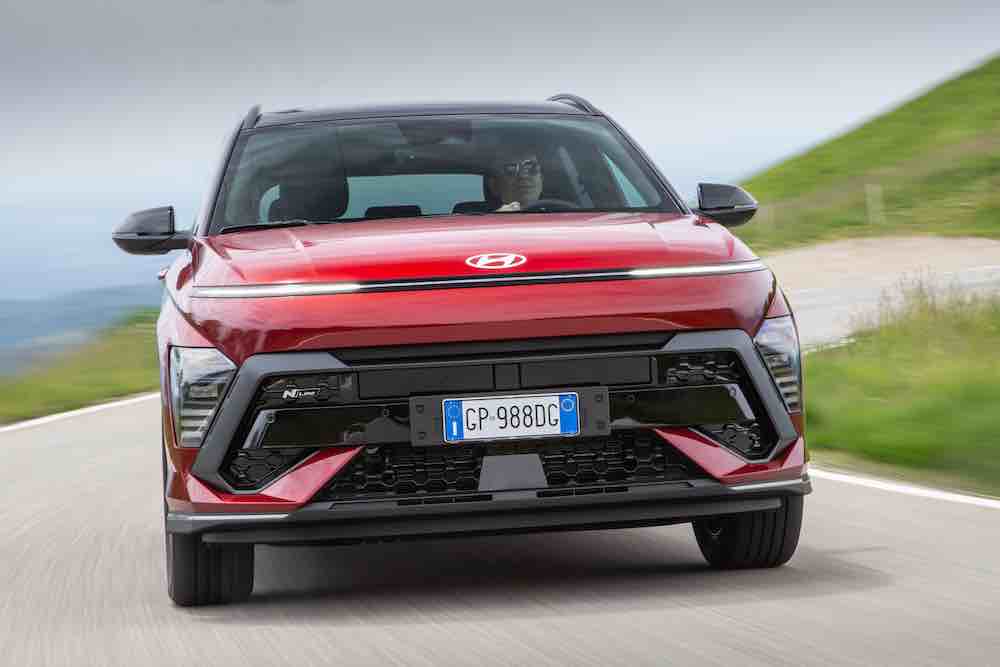
As for segment C, with Hyundai Tucson, Kona takes to the road to offer performance with full comfort and lots of technology.
Hyundai Kona, the second generation arrives
Orderable in its thermal versions, the New Hyundai Kona with the second generation, it changes pace. They stand out increased size, equipped con technology advanced and available with engines: gas, mild hybrid, full hybrid ed electric. The latter will arrive in the autumn.
For our preview test, we got behind the wheel of the version full hybrid.
This one features an updated version of the same engine as the Kona’s older sister 1.6 four-cylinder naturally aspirated mated to an electric motorfrom the combined power of 141 Cv.
Larger dimensions that wink at a futuristic design
Inevitable comparisons at a glance, with the first generation. Let’s start with the dimensions, the New Hyundai Kona measure 4.350 mm. These increase byN Line equipment (because of the body colored sports bumpers) to 4,385 mm.
AND Long 1.825 ed below 1,580 mmdal step of 2.660 mm. Thus it positions itself in the premium B-segment.
Again, the Horizontal LED is the smile of New Hyundai Kona, which is repeated at the rear giving a clean overall view.
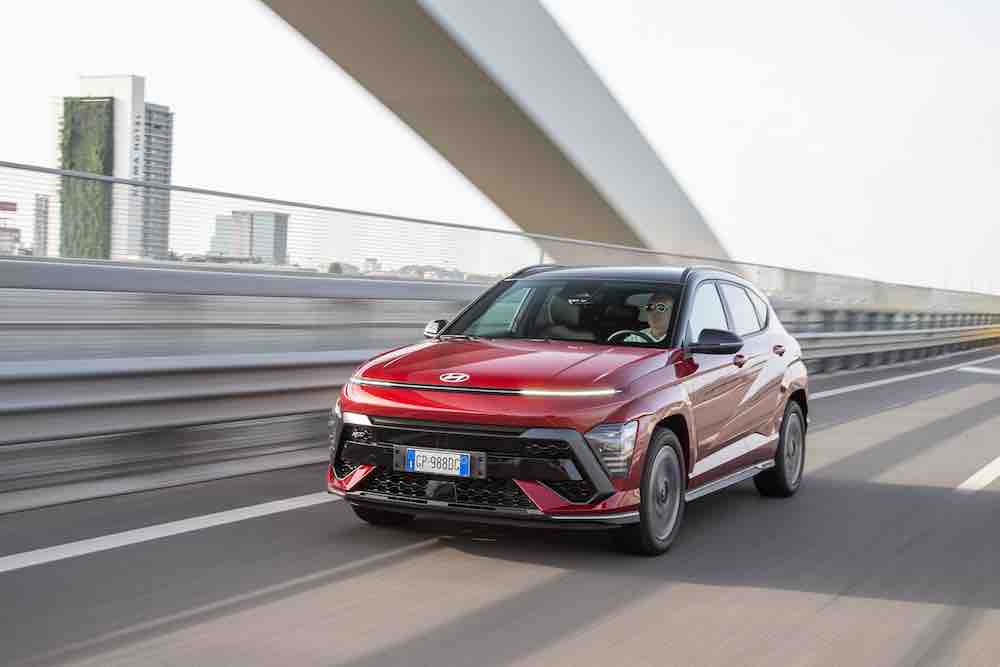
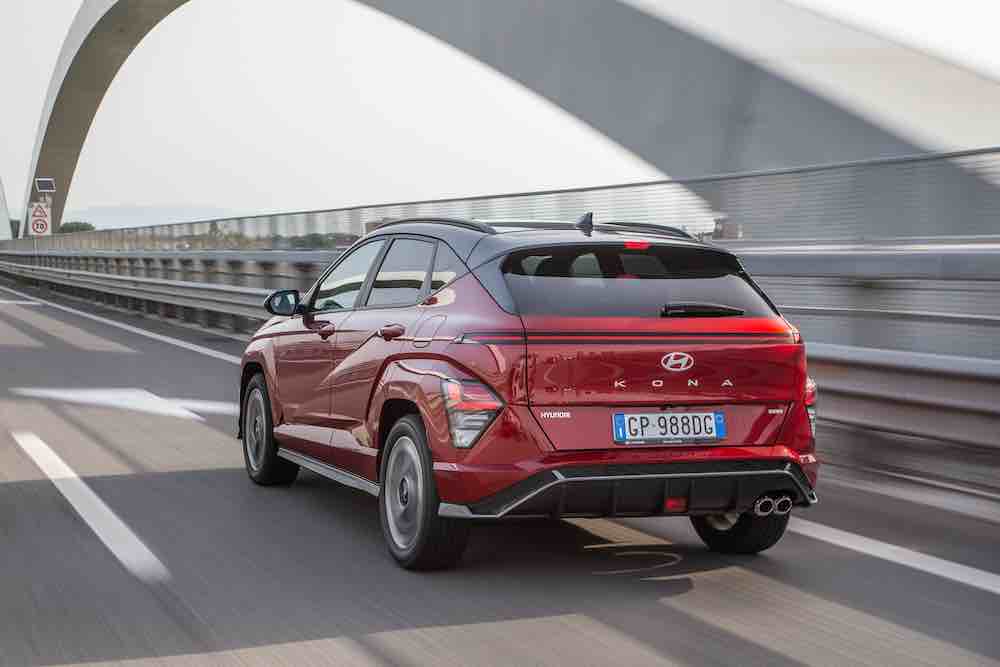
Muscular yes, but nothing out of place on its exterior. Another feature is the choice of the Korean manufacturer to develop the car on the basis of the electric motor, subsequently adapting it to accommodate the thermal enginesa reverse procedure to the usual one.
Finally, the front mobile deflectors have been adopted to improve the aerodynamic flow at low speeds.
The interior of the B-SUV
Grown inside and out. The passengers are not only comfortable, but the dimensions are just close to those of a small sofa.
On the bridge winds a screen from 12,3″. From here, the infotainment integrates connected functions and is included in a panoramic display, a digital dashboard, also 12.3″. THE physical commands they are located on the center console, and the shifter is on the steering wheel stalk.
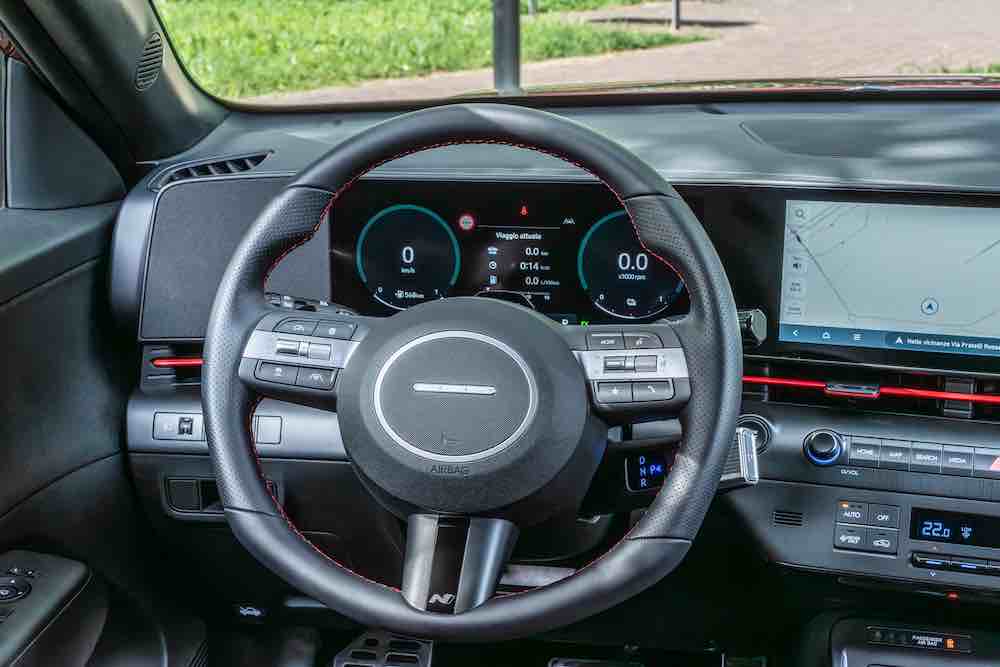
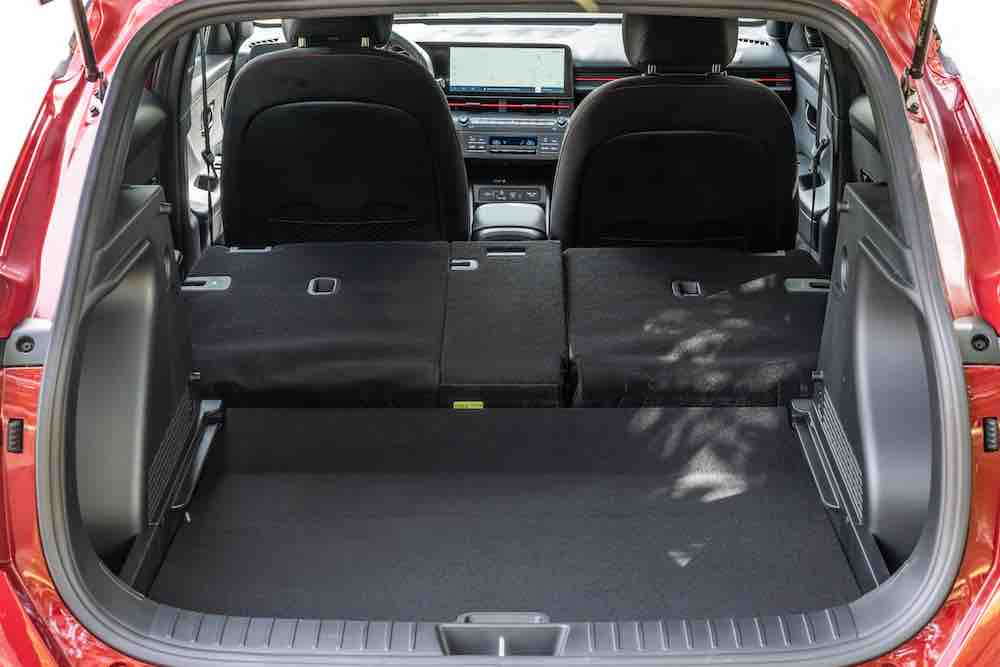
While the climate control is regulated on a screen with blue characters. About the setup N Lineobject of the test, there are some expedients, which underline its sportiness.
Among these the symbol N on the steering wheel, the floor mats and the red line that runs along the dashboard and continues along the inner lining of the doors. The central tunnel is lowered and excavated with a storage tray. This contains retractable revolving cup holders, as well as a small compartment under the armrest and space for the phone with wireless charging plate.
The trunk has increased, it contains 466 liters30% more than her older sister.
Technological, connected and latest generation ADAS
Everything revolves around the driver and his safety. Let’s start from Hyundai Smart Sensewhich analyzes the level of attention of the pilot. This evaluates when his attention wanes and he needs a break.
Il blind spot sensor offers the car to go forward or backward remotely and when it is parked.
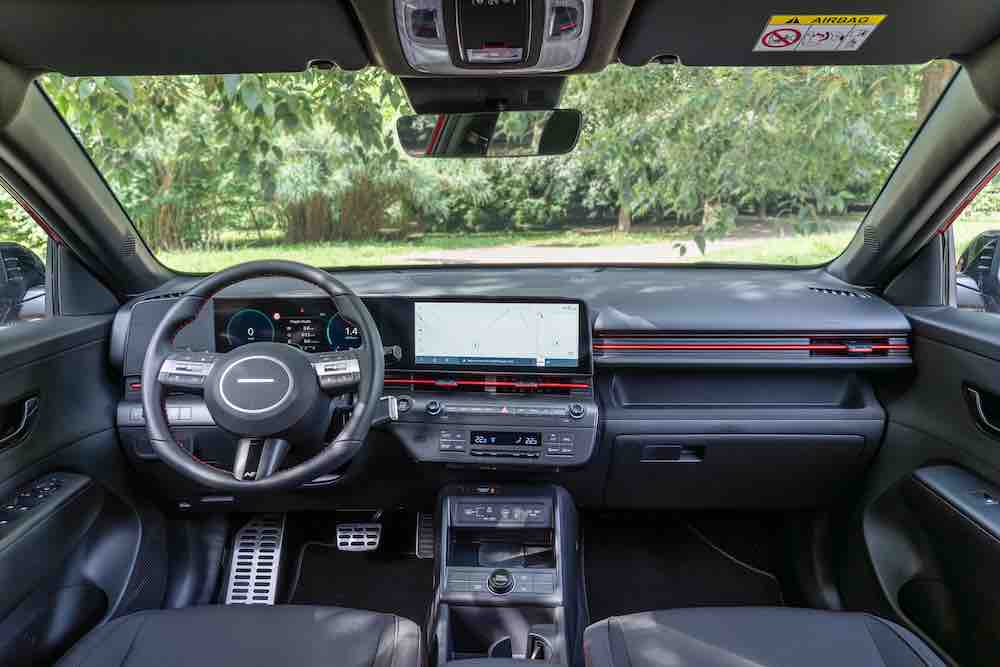
There is no shortage of collision warningsand the adaptive cruise controlo and the lane keeping system. The driving modes are: Eco to save fuel, Sport for more performance e Snow for routes with difficult surfaces.
Finally with the system Digital Key 2 Touch the smartphone, by downloading the dedicated app, is the digital key. This can be shared with up to three other users. Inside there are three USB-C chargers up front (one with data support) and two for rear passengers.
All active systems can confuse the driver, so before getting on board they can be adapted to various needs.
Our proof
From Piazza Gae Aulenti (Milan) to Lake Orta and back. Highway and provincial roads have been our route. We got behind the wheel of the New Hyundai Konawith equipment N Lineconsidered more sporty.
Il motor and the 1.6 naturally aspirated and 105 CV combined withfull hybrid electric drive, and 141 CVin range it is the most powerful.
Sporty, but not so much. Let’s start with the gearbox, housed on the steering wheel stem, it works smoothly and without the scooter effect. To get the best out of the powertrain just select the function Sport: Its performance is snappy and smooth.
New Hyundai Kona
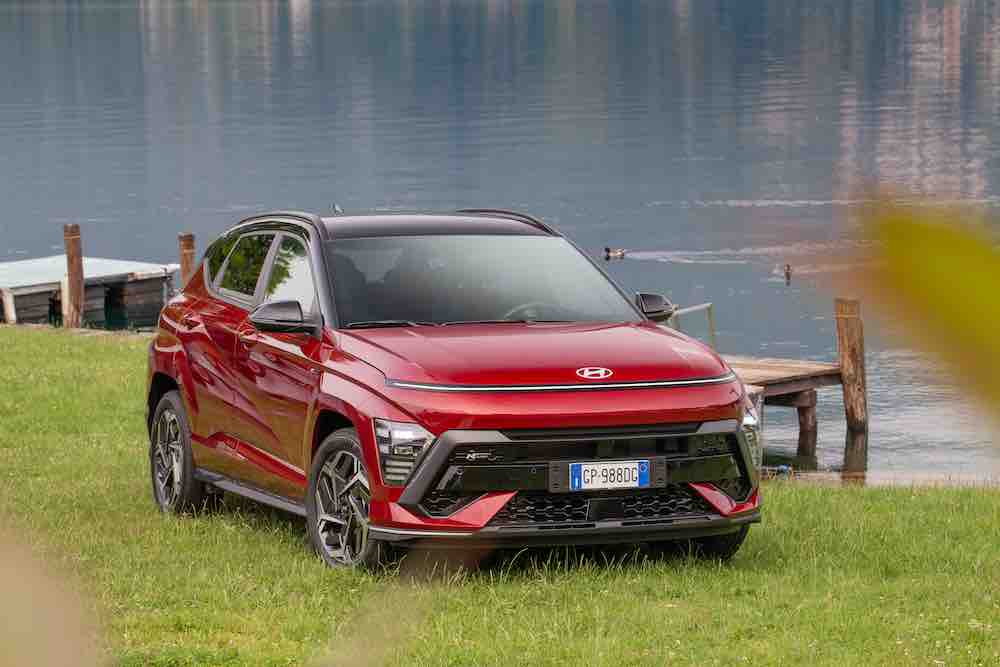
On the motorway, the thrust is progressive, while in the city, by selecting the mode ECOthe hybrid system gives the possibility of save petrol. By turning off the internal combustion unit and moving to all-electric mode.
The car passes by 0 to 100 km/h in 11.2 seconds and reaches a maximum speed of 165 km/h. The consumption measured along the test is good. We covered about 160 kilometers, mixing the modes, with an average consumption of 18.8 km/lequal to approx 5.3l/100kmjust above the declared figure (4.5-4.8 l/100 km).
Finally, the steering in ECO mode is light, in Sport it stiffens. Regarding regeneration, with the paddles behind the steering wheel you can set the electric motor brake level on various steps, in addition to the automatic one.
Engines available
The New Hyundai Kona it is present with four different types of engines: benzina, mild hybrid, full hybrid ed elettrica. At the base of the range is the engine 1.0 three-cylinder turbo from 120 Cvavailable with six-speed manual or seven-speed automatic transmission (consumption 5.6-6.0 and 5.8-6.5 l/100 km respectively).
The version mild hybrid a 48 V of this same engine, mated to a six-speed DCT automatic (5.4-5.9 l/100 km of consumption). There full hybrid of our test, with engine 1.6 naturally aspirated and six-speed DCT automatic gearbox.
Dulcis in fundo, the version will also arrive in the autumn 100% electricwith two power cuts and battery: 48.4 kWh and 151 HP, 65.4 kWh and 218 HP.
Prices
There are three arrangements: X Line, N Line e X Class.
X Line from the 17″ alloy wheels (18″ on the full hybrids), the Smart Sense with lane keeping and the 12.3″ multimedia system compatible with Android Auto and Apple CarPlay.
N Line, considered sportyadds specific external and internal finishes, 18″ rims and metal pedals.
X Class It has all the extra Adas, cloth/leather seats, sunroof and power liftgate.
Costs: petrol from 28.500 euro with manual gearbox and 30.500 with the automatic. Mild hybrid costs 29.500 euro. The full hybrid part gives 34.500 euro.






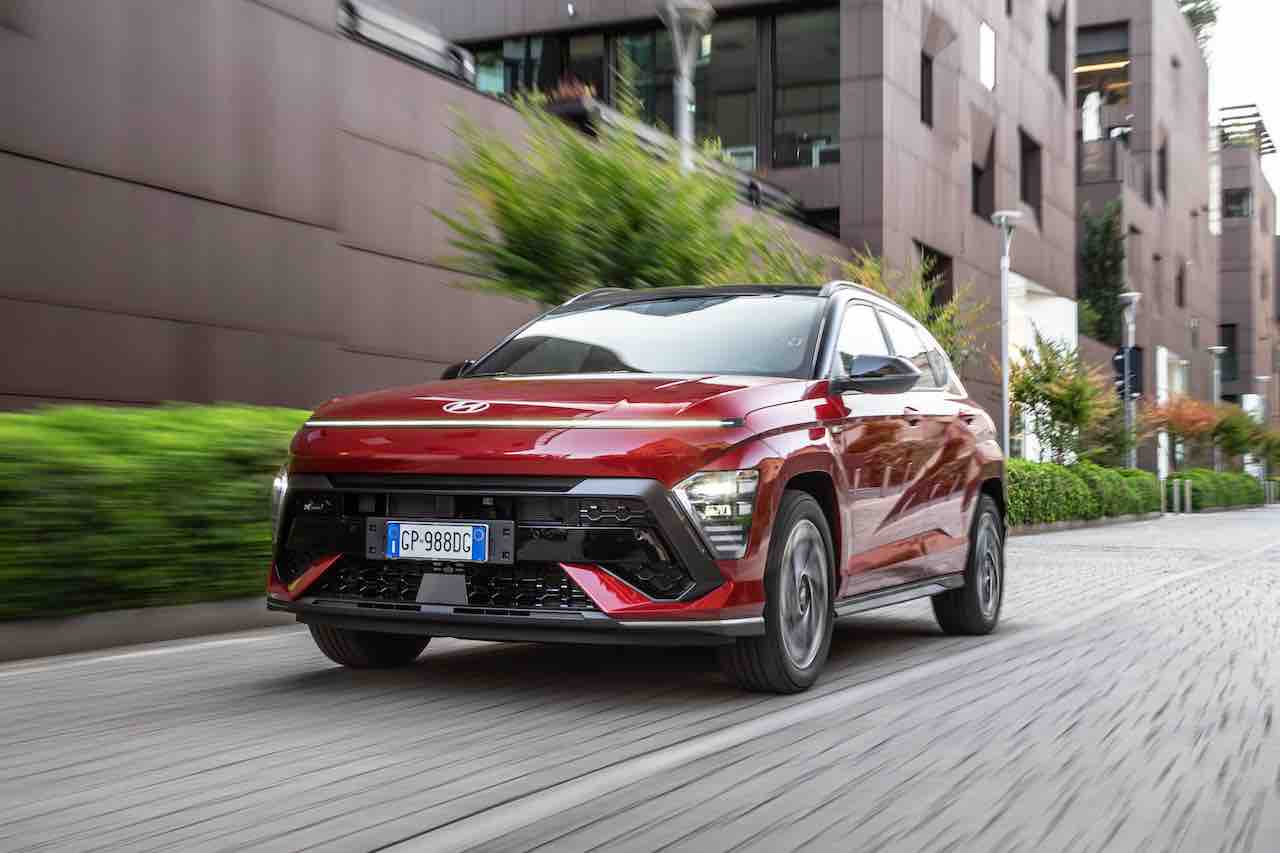









Leave a Reply
View Comments